We follow a literary trail around Windermere and Grasmere, jewels in the crown of the magnificent Lake District
There’s something about the Lake District – something that sparks the imagination and soothes the soul. A picture-perfect expanse of rugged peaks, placid waters and rolling farmland, neatly divided by dry-stone walls and dotted with stone-built villages, northwest England’s Lake District has the double accolade of being both a UNESCO World Heritage Site and a National Park.
Walkers wax lyrical about its famous fells (as the hills and mountains are called here), but it’s just as rewarding to explore it in a more leisurely way – perhaps following the trail of two literary lights who found inspiration here a century apart.
One of the area’s most famous devotees was Beatrix Potter, the much-loved children’s author who escaped the constraints of Kensington and found peace in a cottage above Windermere. A century earlier, the Romantic poet William Wordsworth spent his most prolific years in Grasmere. The lakes of Windermere and Grasmere are just three miles from each other, connected by regular buses, so it’s easy to plot a route through the romantic landscapes that inspired these great writers, and visit their wonderfully evocative homes.
Our tour begins around Windermere, the biggest of the area’s 16 lakes, at over ten miles long. It has long been the most popular of the Lakes, ever since the arrival of the Kendal and Windermere rail line in 1847. Wealthy families built holiday homes overlooking the water and took steamers across the lake to admire the scenery. This excursion is now provided by Windermere Lake Cruises, whose steamer-style vessels and modern launches glide up and down the lake.
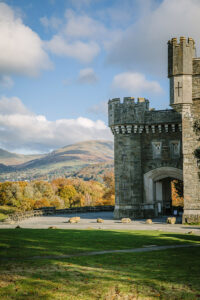
From the deck you can spot the mock-Gothic Wray Castle on the western shore, where Beatrix Potter and her family spent their first summer in the Lake District in 1882. A new exhibition at the castle displays the photographs of Rupert Potter, Beatrix’s father, which reveal a passion for the local nature that he passed onto his daughter. Beatrix spent her days sketching the mountains, woodlands and flowers: the first glimmer of a love for the landscape that would last for the rest of her life.
Many happy summers followed, and Beatrix’s holiday sketches evolved into picture stories for her family and friends. The tales featured a mischievous rabbit named Peter, a hedgehog named Mrs Tiggy-Winkle and many other lovable creatures. The Tale of Peter Rabbit was published in 1901, and with the proceeds Beatrix bought herself a holiday home above Windermere. Hill Top, a small working farm with a rambling cottage garden in the village of Near Sawrey, provided inspiration for many of her famous stories.
Step into the simple farmhouse and it is as if its one-time owner has just left the room: a fire crackles in the grate and Beatrix’s clogs sit neatly under a chair. All of the furniture is hers, from the willow-pattern plates displayed on the scrubbed oak dresser to the grandfather clock ticking cosily in the corner. The parlour is a surprising contrast, with its elegant furniture and marble mantlepiece: a reminder that, while Beatrix immersed herself in country life, her background was in the wealthy middle classes.
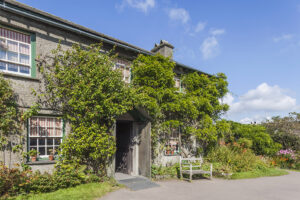
The informal cottage garden is a delight, immediately recognisable from Beatrix’s famous illustrations. You can imagine Peter Rabbit hopping up the flagstone path in search of cabbages, and Jemima Puddle-Duck laying her eggs in the rhubarb patch.
In 1913 Beatrix married local solicitor William Heelis and moved to nearby Castle Cottage, but she kept Hill Top as a place to work, entertain and display her collections. Beatrix left Hill Top to the National Trust on her death, stipulating that it was to be preserved as she left it – a large part of its charm.
At the Beatrix Potter Gallery in the pretty village of Hawskhead, you can get up close to illustrations of her beloved characters, and follow the story of Beatrix’s evolution from children’s author to passionate conservationist: upon her death, Beatrix left 4,000 acres of land in the Lake District to the National Trust in order to save it from development.
Before leaving the lake, stop off at the wonderful Windermere Jetty Museum, which celebrates the rich history of the Lakes with a world-class collection of boats. You’ll find an array of special vessels here, from Beatrix Potter’s ramshackle rowing boat, made of old floorboards, to record-breaking speed boats and the collection’s flagship, the dazzling steam launch Branksome, built in 1896.
Fitted out with walnut panelling, velvet upholstery and a silver tea service, it’s one of the finest Victorian steam launches in the world, meticulously restored in the on-site conservation workshop. You can even join a cruise on one of the museum’s gleaming Edwardian launches too. From Windermere, travel winding lakeside roads to beautiful Grasmere, the lake best known for its association with the poet William Wordsworth, who famously declared it ‘the loveliest spot that man hath ever found’.
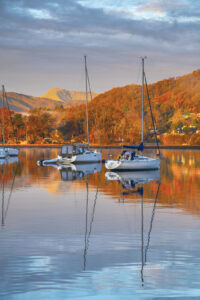
Recently opened after a £6.5m reimagining, Wordsworth Grasmere incorporates Dove Cottage, where the poet moved in 1799 with his sister Dorothy. Wordsworth was inspired to write many of his best works here, while Dorothy penned her Grasmere Journal, a vivid chronicle of their daily life. The cosy cottage, with its stone floors, dark-panelled rooms and glowing fires, transports you back to the time when it was a bustling family home, while you can explore handwritten manuscripts, journals and letters in the excellent museum next door.
En route to the Wordsworth family’s next home, Allan Bank, follow your nose to the Grasmere Gingerbread Shop, where the spicy-sweet treat was invented in 1854; the store has barely changed in the years since. Before establishing as a shop, the building housed the village school, where Wordsworth once taught.
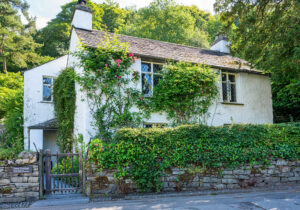
It was at Allan Bank, a handsome Georgian villa with views over Grasmere, that Wordsworth began his Guide to the Lakes (1810), in which he first mooted the idea of ‘a sort of national property’ that everybody ‘had the right to enjoy’, long before the existence of national parks.
It was well over a century before the Lake District eventually became one, thanks to the efforts of a later resident of the same house, Canon Hardwicke Rawnsley. One of the three founding members of the National Trust and a passionate campaigner for conservation, Rawnsley – aided by his great friend, Beatrix Potter – was instrumental in preserving the Lake District. Allan Bank was left to the National Trust in 1951.
This is an extract. Read the full article in the September/October issue of BRITAIN out on 12 August.
Read more:

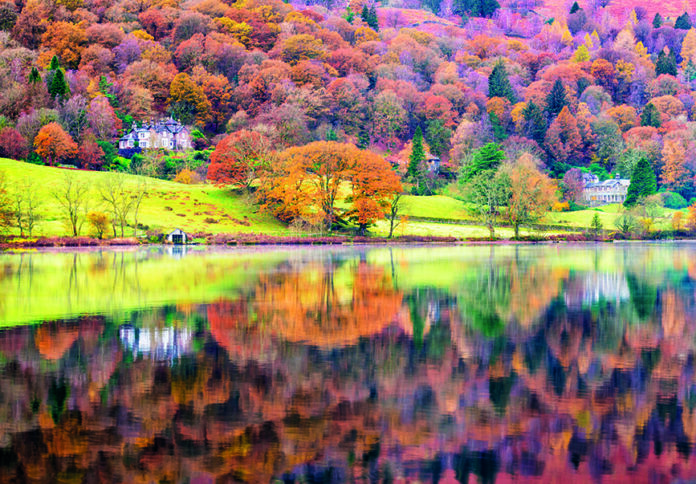




 © 2024
© 2024